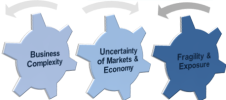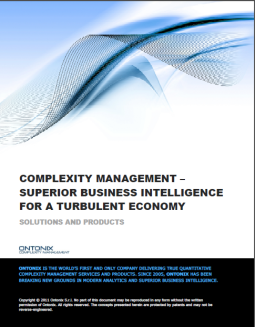Innovation:: managing complexity & reducing risk [Design News]
Tuesday, 11 June, 2013 Leave a comment
I was first aware of the author courtesy of this quote…that alarmingly few business ‘leaders’ appear to, either, believe or understand…
| “In a complex system, learning how all the pieces—constant and variable—interact gives a depth of understanding that averts catastrophe. That is what we mean by human-centred design—understanding the interfaces among technology, people, communities, governments, and nature. This is what makes complexity manageable”. |
If you are in the business of making money based upon the ability of another party to avoid financial loss, then your own ability to identify the properties that distinguish ‘good risk from bad’ is, SURELY, fundamental!? So the message that there is a means to gain “…understanding that averts catastrophe“, through “understanding the interfaces among technology, people, communities, governments, and nature” must surely be greeted with wide-eyed enthusiasm. Read more of this post














